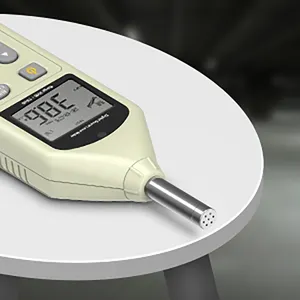Introduction to Audio Measurement
Audio measurement is an essential aspect of sound engineering and acoustics. It involves the use of specialized instruments and techniques to assess various audio characteristics, ensuring accuracy and optimal performance in sound systems. Whether you're working in a recording studio, live sound reinforcement, or broadcasting, understanding audio measurement is vital for achieving the best results. In this comprehensive guide, we’ll explore the different types, functions, features, and applications of audio measurement devices that every audio professional should know.
Types of Audio Measurement Instruments
There are various types of audio measurement instruments, each designed to assess specific aspects of sound quality. The primary categories include:
- Sound Level Meters: Measure the intensity of sound in decibels (dB), providing crucial data for noise compliance and environmental sound evaluations.
- Frequency Analyzers: Visualize and measure the frequency spectrum of audio signals, allowing engineers to identify and correct frequency response issues.
- Oscilloscopes: Display the waveform of audio signals, enabling professionals to examine signal integrity, distortion, and other time-based characteristics.
- Room Acoustic Measurement Tools: Assess the acoustic properties of a space to optimize sound quality through proper treatment and speaker placement.
Functions and Features of Audio Measurement Devices
Audio measurement tools come equipped with a range of functions and features that enhance their effectiveness. Key functions include:
- Calibration: Many devices allow for calibration, ensuring accuracy and reliability in measurements.
- Real-time Analysis: Some tools provide real-time feedback, allowing immediate adjustments during live performances or recordings.
- Data Logging: Many instruments support data logging capabilities, enabling detailed analysis of audio performance over time.
- Multiple Input Channels: Advanced audio measurement systems can analyze multiple audio channels simultaneously, providing a comprehensive overview of complex audio environments.
Applications of Audio Measurement in Various Fields
Audio measurement is widely utilized across various sectors, each requiring precise sound assessment. Notable applications include:
- Music Production: Ensures studio environments are acoustically optimized and that recordings meet professional standards for sound quality.
- Broadcasting: Guarantees that audio levels conform to regulations and standards for transmission, enhancing listener experience.
- Live Sound Engineering: Assists in optimizing sound systems for concerts and events, ensuring even sound distribution and clarity.
- Environmental Noise Assessment: Used in urban planning and environmental studies to measure and mitigate excessive noise pollution.
Advantages of Implementing Audio Measurement Techniques
Integrating audio measurement techniques into your workflow presents numerous benefits, such as:
- Enhanced Sound Quality: By identifying and correcting audio issues, users can achieve superior sound fidelity and clarity.
- Consistency: Regular audio measurement ensures consistent quality across different environments and projects, leading to enhanced professional credibility.
- Cost-Effectiveness: Preventing sound-related issues before they escalate can save costs associated with rework and equipment damages.
- Improved Client Satisfaction: Delivering high-quality sound boosts customer satisfaction and can lead to repeat business or referrals.










































